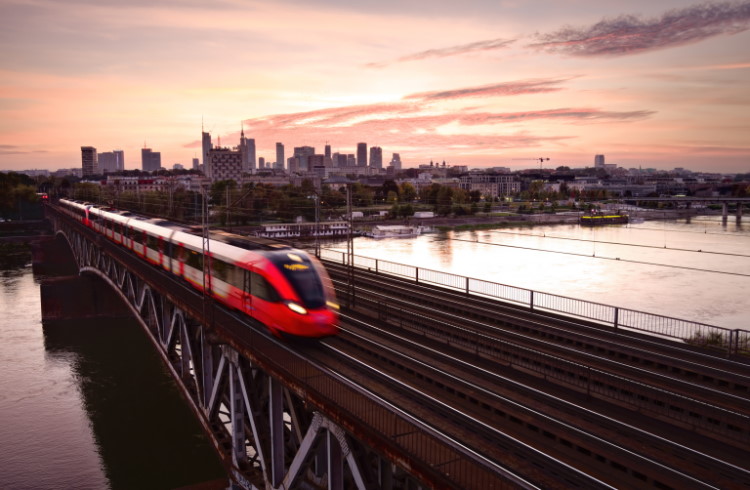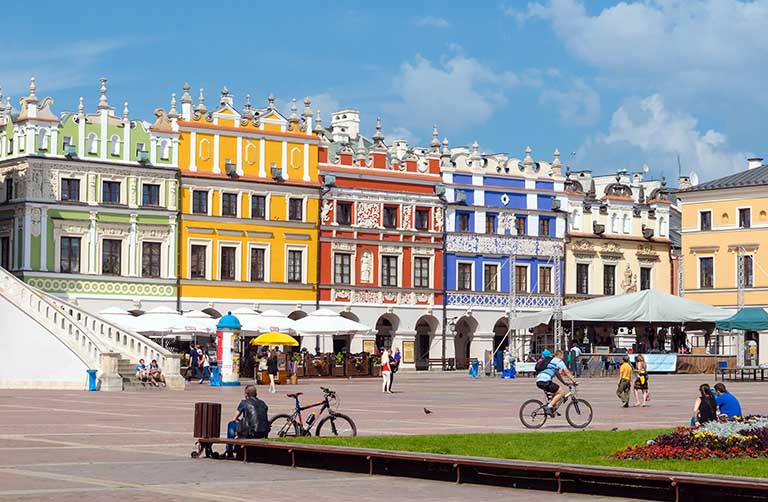Public Tranport in Poland: How to Get Around
With a wide network of trains, trams, and buses, transportation in Poland is generally easy and efficient. Here are the best ways to get around and some tips on staying safe.
 Photo © Getty Images / Antagain
Photo © Getty Images / Antagain
Many travelers swear that the Polish train system is the best way to travel to most of the cities. Are they right? Here are the various public transportation options in Poland, along with their pros and cons.
- Train travel in Poland
- Bus travel in Poland
- Local public transport
- Safety on public tansport
- Poland by car
Train travel in Poland
In our opinion, train travel should be your first choice: it's cheap, it's convenient, and it's usually on time. You have a choice of three main types of trains: InterCity, Twoje Linie Kolejowe (TLK), and POLREGIO. InterCity and TLK lines are operated by PKP, the national railway country.
There are three levels of InterCity train: InterCity (IC), Express InterCity (EIC), and Express InterCity Premium (EIP). EIP are high-speed trains, EIC are fast trains, and IC are standard trains. Reservations are mandatory.
TLK trains are a more affordable option and stop at most moderate-sized stations. The equipment is sometimes older and less comfortable than IC trains. Only second-class seating is available (reservations are still required).
POLREGIO trains offer local and inter-regional service. There are various levels of train, REGIO (which stops at all stations), REGIOplus (which stops at a limited number of stations), and InterREGIO (which stops at main stations only). They’re less expensive but slower than IC trains and have only second-class cars.
In addition, many regions of Poland have their own local train carriers.
For travel between cities such as Warsaw, Gdansk, Poznan, and others, InterCity trains are recommended. The service is really good, you can get help in English, and travel is fast. Tickets can be purchased online, at the station, or by machine in major cities. You can also buy tickets on board the TLK or IC trains, but certain rules apply.
If you are traveling with children, or have no Polish at all, this is definitely your best choice. But beware of crowds during the holidays (July-August in particular) or on the major routes (Krakow-Warsaw on the weekends).
First-class cars generally are cleaner and definitely less attractive to thieves, who tend to focus on more crowded second-class cars, as their favorite trick is to create a "crush" as people struggle to enter or exit the train.
When traveling by trains at night, consider taking a sleeper, since you can lock the compartment door while asleep. When looking for a place to sit, it might be better to sit with other passengers rather than try to find an empty compartment to sit in by yourself.
In major cities, train stations offer a range of facilities (luggage lockers, phones, restaurants, money exchange, etc.) but in a small town you may only find a ticket window that opens only a few minutes before the train is due.
Bus travel in Poland
You can also travel around Poland by bus, but of course it’s less comfortable than the train.
Buses can be more useful if traveling in the mountain region, Lake District (Mazury) or for making local connections. And in some cases it may be necessary to take a bus because you can take it to almost all points in Poland. Where there is no stop in a very small village, at least you can get close to it.
There is no longer a national bus line in Poland – instead, there’s a wide range of local, regional, and national carriers covering all sorts of routes. There are also many small, private bus companies which typically offer minibus services. This journey planner can help you choose the right bus and route.
Local public transport
In Poland’s larger cities the public transportation system is well developed. Traveling around a city is easily done using buses or trams or metro line (Warsaw only). In small towns, local and regional bus services are widely provided.
Tickets can be bought at kiosks and vending machines, or sometimes can be purchased on board the bus or tram. Validate your ticket by inserting it into a metal box hanging on the wall of a tram or bus, or before you enter metro. Otherwise, you risk a fine when a man standing next to you suddenly shows a 'controller' badge and asks to see your ticket. (Some tickets are automatically validated when you purchase it – the machine should tell you if validation is necessary.)
Try to avoid travelling during rush hours – delay your ride for an hour or two unless you want to see how it feels to be crammed into a tram or bus.
Also, Polish cities recognize their tickets only. Don’t try to use a left-over ticket from Warsaw while in Krakow.
Safety on public tansport
Organized groups of thieves and pickpockets operate at major tourist destinations, in train stations, and on trains, trams, and buses.
Major cities generally have higher rates of crime against residents and foreign visitors than other areas. Thieves have been known to target the central railway stations at Gdansk, Gdynia, Sopot, Warsaw, and Krakow. They will often target overnight trains and long-distance trains and buses. Most pickpocketing on trains occurs during boarding, so keep your money in a pouch inside your clothes for extra protection.
Wherever you’re planning to go, always remember to protect your valuables, especially your passport, and try to get as much information as possible on the type of travel you are about to choose. It’s also useful to learn a few Polish words just in case you need help on the way. (For example, “Jak moge dostac sie na dworzec?” which means "How do I get to...?”)
Luckily, many Poles speak English and are really helpful when approached for assistance by a foreigner or a tourist.
Poland by car
Traveling by car can be a great way to see Poland, especially if you like independent travel and want to get off the beaten path. But bear in mind that, while road accidents have decreased in recent years, Poland has one of the highest rates of road fatalities in the EU.
Other things to know: headlights must be used at all times, seatbelts are mandatory for all passengers, and children under 12 years and 150 centimeters must ride in special car seats.
Related articles
Simple and flexible travel insurance
You can buy at home or while traveling, and claim online from anywhere in the world. With 150+ adventure activities covered and 24/7 emergency assistance.
Get a quote

No Comments